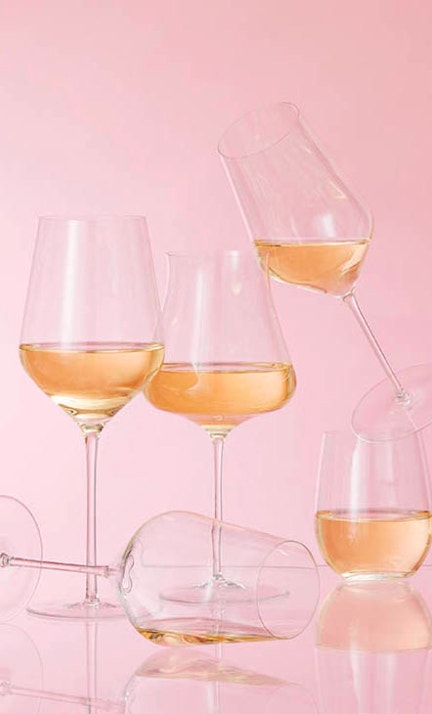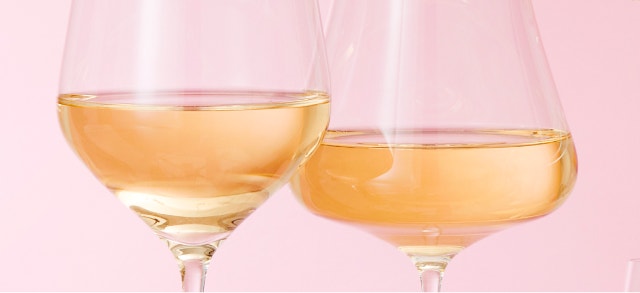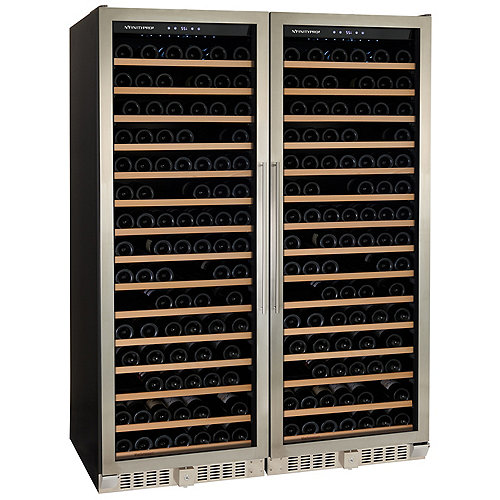Wine Enthusiast |
| How to Use Cynar, According to Bartenders Posted: 09 Jul 2021 05:00 AM PDT  Artichoke is probably not something you'd expect to taste in a cocktail. But, if your drink is made with Cynar, you may pick up hints of the vegetable's flavor. Cynar (pronounced CHEE-nar) is an Italian bittersweet amaro made from artichokes—the big one on the logo is a dead giveaway. But the liqueur is made up of 13 herbs and plants. The spirit's name comes from cynarin, an acid found in artichokes believed to aid digestion. Any actual artichoke flavor is subtle, though. Patrick Gartner, beverage director of Hot Tin and Jack Rose in New Orleans, describes Cynar's flavor as vegetal, earthy, bitter, herbaceous yet sweet. Cynar debuted in Italy in 1952. It became popular thanks to ads that starred Italian actor Ernesto Calindri and the tagline, "Cynar, against the attrition of modern life." "It's like a remedy, a sort of psychological remedy," says Scott Carney, dean of wine studies at the Institute of Culinary Education, of the spirit's unusual appeal. Cynar entered the American market a few decades later, and it's now a bartender favorite for its versatility. It hasn't yet reached the popularity of fellow Italian spirits Campari and Aperol, key ingredients in the Negroni and Aperol spritz, which have become fixtures on bar menus. At 16.5% alcohol by volume (abv), Cynar is less potent than others in the amaro family, like Fernet Branca and Campari. It's also available in a 70-proof variety (35% abv). Here are many of the ways you can enjoy Cynar.  ‘Gateway Amaro'Cynar is an easy-to-drink option and "a gateway amaro," says Carney. It's sweeter and softer than the likes of Fernet and other bittersweet liqueurs. Amari can be an acquired taste, says Gartner. But amari, like Cynar, add balance to cocktails. "Developing a palate and taste for bitter amari opens up a whole new world of sensual experiences," he says. "Asking me to not make drinks with bitter elements like Cynar is like asking an artist to not paint with the color blue. We need bitters to better flesh out the landscape of a balanced drink menu." Use It in Place of Campari or AperolCynar is in the same family as Campari and Aperol, so it works well swapped for either spirit. Cynar is a "happy medium," not as sugary as Aperol, nor as bitter as Campari, says Justin Clark, a bartender at Bywater American Bistro in New Orleans. "I actually love a Cynar spritz," where Cynar replaces Aperol, says Max Reis, beverage director of Gracias Madre in Los Angeles. "It's delicious with the Prosecco. It's got a mild sweetness that balances that out." Gartner says he uses Cynar in place of Aperol in a Paper Plane cocktail, or Campari in a Negroni, sometimes called a Cyn Cyn. He's also made a Negroni variation with Cynar, mezcal, Sherry and orange liqueur. "This drink was a mezcal and Sherry drinker’s dream," says Gartner. "Negroni and the earthiness of the Cynar was the glue that held it all together."  Make a Cynar and TonicCynar and tonic water are "unbelievable together," says Carney. "The sweetness in Cynar kind of goes away and all the herbal flavors come in, and the quinine (from the tonic) gets involved. It's quite a drink." A Cynar and tonic is a lower-alcohol spin on a gin and tonic. A lemon wedge takes the bubbly drink up a notch and balances out the sweetness. Create a Twist on a ManhattanThe Bitter Guiseppe is a "modern classic" cocktail, made from Cynar, sweet vermouth, lemon juice and orange bitters. "The idea is that it's a riff off of a Manhattan," says Carne, where Cynar replaces Bourbon or rye. The Cynar-vermouth combo results in a super-sweet concoction, so lemon helps balance and brighten the cocktail. Cynar can also take the place of the bitters in a traditional Manhattan, another "classic usage," says Reis. Since it complements brown spirits like Bourbon and rye, Clark says he often substitutes Cynar for sweet vermouth in a Manhattan or Boulevardier. Pair With Fruity FlavorsLemon, orange and grapefruit go with Cynar's bitter flavor, says Reis. He likes to add a Cynar float to a Greyhound cocktail, which combines gin or vodka and grapefruit juice. Cynar also pairs well with ripe red fruits like strawberries and cherries, as well as chocolate and vanilla, says Clark. Or, Just Keep it SimpleCynar is considered an aperitivo, a beverage traditionally enjoyed before a meal, and a digestive, which is sipped after a meal. Both are usually enjoyed straight, neat or over ice. So, if you're new to Cynar, keep it simple. "Cynar drinks great by itself," says Reis. Gartner agrees and says it's great "after dinner, over ice with a lemon slice or an orange slice. If that isn't the classic way to drink Cynar, it should be." |
| More than Rosé: Eight Red Wines from Provence Posted: 09 Jul 2021 04:00 AM PDT  For many U.S. wine lovers, Provence is synonymous with rosé. The pale pink wines common to the region have become a summer obsession — and with good reason. In Provence 89% of the vines are dedicated to rosé production, leaving just a small amount to red and white wines. However, the red wines of Provence are worth seeking out. Bandol is already known for producing serious rosés on the darker end of the spectrum, so it should be no surprise that the region also produces world red class red wines. Here are eight to try. Domaine de la Bégude 2017 Bandol; $39, 93 points. This bold, structured wine from the renowned estate combines rich Mourvèdre tannins with spice and fragrance hinting at the nearby Mediterranean. With its impressive density the wine could age further. Drink from 2022. Kysela Père et Fils. —Roger Voss Domaine des Féraud 2016 Grande Cuvée (Côtes de Provence); $30, 93 points. The inverse blend to the Indigène brand from the producer, this has 80% Cabernet Sauvignon. The result is a structured wine, still packed with dark tannins and needing further aging. It is rich, full of black currants and spice. Drink this wine from 2023. Organic. Vins & Vignobles. —R.V. Domaine le Galantin 2017 Bandol; $32, 93 points. This powerful, dense and rich wine showcases Mourvèdre. Bold tannins and red-plum fruits are infused by the wine’s generous structure and obvious potential. The wine needs to age and should be ready from 2023. Misa Imports. —R.V. Les Vignobles Gueissard 2017 Cuvée G (Bandol); $26, 93 points. Structured with great perfumes and ripe tannins, this is a ripe wine. Concentration comes from low-yielding Mourvèdre, giving dryness and density that still need to soften. Drink this powerful wine from 2022. Winebow. —R.V. Château Grand Boise 2018 Côtes de Provence Sainte-Victoire; $37, 92 points. This smoothly textured wine brings together rich blackberry fruits with dark chocolate and spice. Ripe tannins give the wine density and concentration, showing the wood-aging flavors and structure. Drink this wine from 2022. Organic. Soilair Selection. Cellar Selection. —R.V. Château la Coste 2016 Grand Vin du Château la Coste (Coteaux d’Aix-en-Provence); $65, 92 points. Wood aged and rich, this selection from old vines is powerful and dense. The blend of Syrah and Cabernet Sauvignon has plenty of room for tannins as well as bold black fruits. The wine is just reaching maturity although even more time would be better. Drink now, or wait until 2022. Organic. Skurnik Wines, Inc. Cellar Selection. —R.V. We Recommend: Château Paradis 2017 Coteaux d’Aix-en-Provence; $30, 92 points. Syrah, Cabernet Sauvignon and Grenache come together in this rich, generous wine typical of the appellation. With broad red fruits and acidity in balance, the wine is approaching maturity. Drink from late 2021. Bridge Imports. Editors' Choice. —Roger Voss Château du Carrubier 2017 Côtes de Provence; $22, 90 points. Syrah, Grenache and Cabernet Sauvignon are the blend for this ripe wine. Aged in tank rather than wood, it is spicy with black-currant fruits and a stalky background. This rich wine is not quite ready, so wait until 2020. DB Wine Selection. —R.V. |
| You are subscribed to email updates from Wine Enthusiast. To stop receiving these emails, you may unsubscribe now. | Email delivery powered by Google |
| Google, 1600 Amphitheatre Parkway, Mountain View, CA 94043, United States | |



















0 comments:
Post a Comment